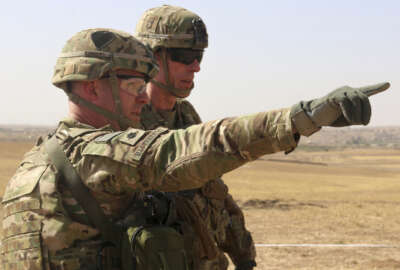

The Air Force will send nondeployable airmen to administrative separation or to disability evaluation. However, there are many exemptions to the policy.
More than a year after former Defense Secretary Jim Mattis announced a nondeployability policy, the Air Force finally released guidance as to how it will deal with airmen who cannot perform their duties.
The Air Force is the last service to respond to Mattis’ nondeployability policy, which states that service members who are not able to perform duties for 12 months or more can be separated from the military.
The Air Force guidance follows similar actions already set by the other military services.
Airmen who are nondeployable for more than 12 consecutive months will be notified by their chain of command and evaluated for retention through referral to the Disability Evaluation System or they will be considered for administration separation.
“We expect all airmen to exercise personal accountability for their deployable status and to take the necessary steps to maintain their readiness,” a memo signed by Air Force leadership stated. “Commanders will ensure airmen understand what is required and ensure the necessary resources are available to achieve our goal of a 95 percent or higher deployable rate within their units. The defense of our nation requires airmen and the Air Force be ready to deploy at all times.”

The Air Force released a long list of reasons airmen can be nondeployable and not subject to the new policy. Those include being pregnant or postpartum, in training or transient status, deployable with limitations or are filling positions exempted by the secretary of defense.
Adoption, humanitarian assignment, legal action, sole survivor/surviving family member/deferred from hostile force zone, conscientious objector, absent without leave, or pending administrative separation are also reasons for being exempt from the policy.
When DoD-wide policy was announced, about 13 percent to 14 percent of the military service was considered nondeployable. The Army held the highest number of nondeployable service members, with about 15 percent of the service unable to go overseas.
Sgt. Maj. of the Army Daniel Dailey said in 2015 that non-deployable soldiers were the number one problem in the Army.
“If you will not or cannot fight and win, then there’s no place for you in the Army,” Dailey said. “We have to become unemotional about this. We have a job to do.”
The Army has since whittled down the number of nondeployable soldiers to about 5 percent of the force. The Air Force did not have as large of an issue.
“The Air Force has had a lower percentage of nondeployable people than the other services historically. We also have some career fields that don’t deploy at all,” Air Force Secretary Heather Wilson said last year as the service was mulling over how to implement the strategy. “I would expect we would try to implement [the DoD] policy with two priorities in mind. One is the lethality and readiness of the force overall to be able to fight. The second is fairness. There is an argument that says if you have 100 people that can do a job and 10 of them that are nondeployable, the other 90 are carrying the greater burden. If that’s true then we’ve got to do things that are fair.”
Copyright © 2025 Federal News Network. All rights reserved. This website is not intended for users located within the European Economic Area.
Scott Maucione is a defense reporter for Federal News Network and reports on human capital, workforce and the Defense Department at-large.
Follow @smaucioneWFED
